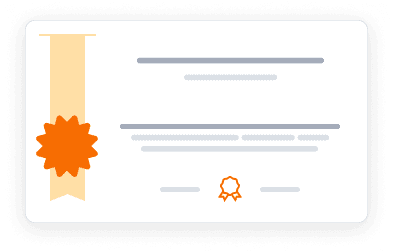Learn to create user-friendly documentation for cancer informatics tools, enhancing their impact and usability.
Learn to create user-friendly documentation for cancer informatics tools, enhancing their impact and usability.
This course focuses on improving the documentation and usability of cancer informatics tools, addressing a critical need in the field. It emphasizes the importance of user-friendly documentation in maximizing the impact and efficiency of bioinformatics tools, particularly for researchers with limited programming backgrounds. The curriculum covers key aspects such as understanding the importance of usability, identifying user community needs, building effective documentation and tutorials, and obtaining user feedback. Participants will learn how to create smooth 'getting started' sections, helpful how-to examples, handy reference guides, and clarifying code comments. The course also addresses keeping documentation up-to-date and incorporating user feedback for continuous improvement. Designed for cancer informatics tool developers, particularly those involved in the Informatics Technology for Cancer Research, this course aims to enhance the reusability and impact of specialized data tools in cancer research.
2,736 already enrolled
Instructors:
English
What you'll learn
Understand the importance of usability and documentation in cancer informatics
Identify the specific needs of your user community in cancer research
Create user-friendly 'getting started' sections for cancer informatics tools
Develop effective how-to examples and tutorials for complex bioinformatics tools
Design comprehensive reference guides for troubleshooting and advanced use
Write clear and helpful code comments to enhance tool maintainability
Skills you'll gain
This course includes:
60 Minutes PreRecorded video
9 quizzes
Access on Mobile, Tablet, Desktop
FullTime access
Shareable certificate
Closed caption
Get a Completion Certificate
Share your certificate with prospective employers and your professional network on LinkedIn.
Created by
Provided by

Top companies offer this course to their employees
Top companies provide this course to enhance their employees' skills, ensuring they excel in handling complex projects and drive organizational success.





There are 10 modules in this course
This course provides comprehensive guidance on creating effective documentation and improving usability for cancer informatics tools. It begins by establishing the importance of documentation in cancer research and introduces key concepts from user design. The curriculum then delves into the components of good documentation, including creating smooth getting started sections, helpful how-to examples, and handy reference guides. Participants learn about writing clarifying code comments, obtaining user feedback, and keeping documentation up-to-date. Throughout the course, there's a strong emphasis on practical application, with hands-on exercises and templates for building documentation. The content is specifically tailored for cancer informatics tool developers, aiming to increase the impact and usability of their tools in the research community.
Welcome
Module 1 · 1 Hours to complete
Lessons we should borrow from user designers
Module 2 · 45 Minutes to complete
What does good documentation look like?
Module 3 · 55 Minutes to complete
Creating a smooth getting started section
Module 4 · 17 Minutes to complete
Creating helpful how-to examples
Module 5 · 40 Minutes to complete
Creating handy reference guides
Module 6 · 17 Minutes to complete
Creating clarifying code comments
Module 7 · 35 Minutes to complete
Obtaining user feedback
Module 8 · 50 Minutes to complete
Other helpful features
Module 9 · 15 Minutes to complete
How to keep your documentation up-to-date
Module 10 · 25 Minutes to complete
Fee Structure
Payment options
Financial Aid
Instructor
Pioneering Accessible Genomic Data Science Education
Candace Savonen has established herself as a dedicated educator and innovator in genomic data science, focusing on making complex bioinformatics tools and concepts accessible to diverse audiences. Her work centers on developing comprehensive educational materials that emphasize reproducibility and scalable teaching methods in bioinformatics and cancer genomics. As a key contributor to various educational initiatives, she has been instrumental in creating and delivering bioinformatics education materials specifically tailored for cancer genomics research. Her approach combines practical application with theoretical understanding, ensuring that learners can effectively apply genomic tools to their specific areas of expertise. Through her involvement in developing online learning modules and educational resources, she has demonstrated a commitment to breaking down barriers in genomic data science education, making these essential tools and knowledge more attainable for researchers and practitioners across different fields. Her teaching methodology emphasizes the importance of reproducible research practices and sustainable approaches to data analysis, contributing significantly to the democratization of genomic data science education.
Testimonials
Testimonials and success stories are a testament to the quality of this program and its impact on your career and learning journey. Be the first to help others make an informed decision by sharing your review of the course.
Frequently asked questions
Below are some of the most commonly asked questions about this course. We aim to provide clear and concise answers to help you better understand the course content, structure, and any other relevant information. If you have any additional questions or if your question is not listed here, please don't hesitate to reach out to our support team for further assistance.



